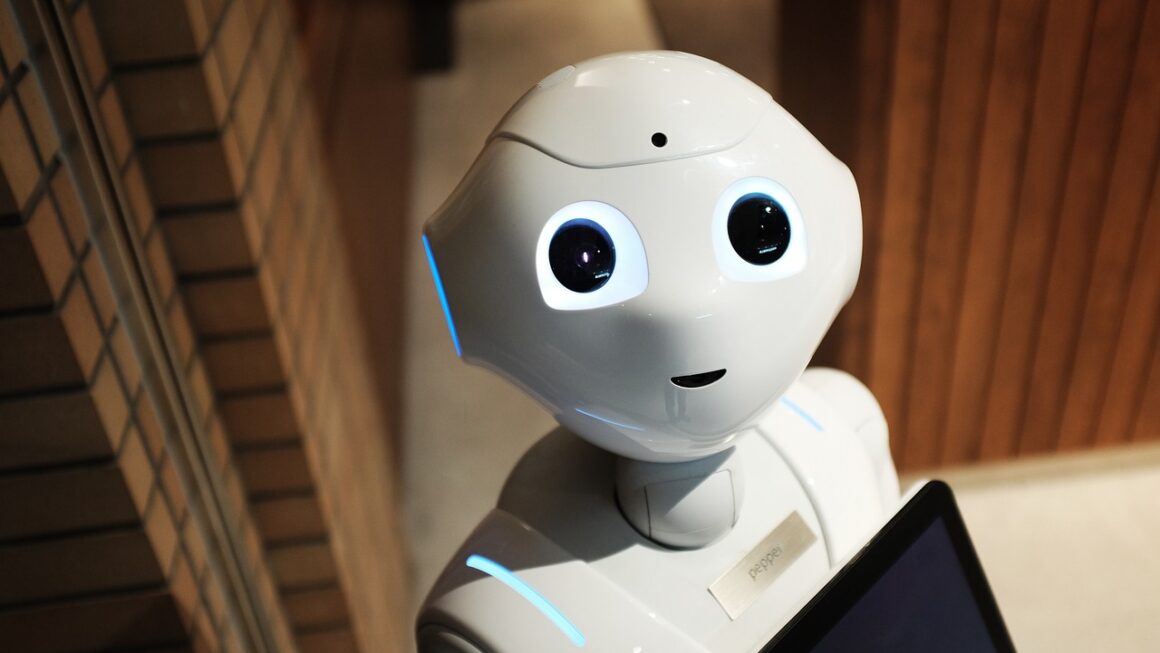Imagine a world where your car drives you to work while you catch up on emails, drones deliver packages with pinpoint accuracy, and factories operate with minimal human intervention. This isn’t science fiction; it’s the rapidly evolving reality of autonomous systems. These sophisticated technologies are poised to revolutionize industries and reshape our daily lives, promising increased efficiency, safety, and convenience. Let’s delve into the fascinating world of autonomous systems and explore their potential.
What are Autonomous Systems?
Defining Autonomy
Autonomous systems are engineered systems that can perform tasks or achieve goals without explicit human instruction. This doesn’t necessarily mean they’re entirely independent; the degree of autonomy can vary. Key characteristics include:
- Sensing: Gathering information about their environment through sensors like cameras, LiDAR, and radar.
- Decision-Making: Processing sensor data and making decisions based on pre-programmed algorithms or machine learning models.
- Action: Executing decisions through actuators and controllers, such as motors, brakes, and robotic arms.
- Learning: Some advanced systems can learn from experience and adapt their behavior over time.
Levels of Autonomy
The Society of Automotive Engineers (SAE) defines six levels of driving automation, ranging from 0 (no automation) to 5 (full automation). This provides a useful framework for understanding the spectrum of autonomy in various systems.
- Level 0 (No Automation): The human driver is entirely responsible for all driving tasks.
- Level 1 (Driver Assistance): The system provides limited assistance, such as lane keeping assist or adaptive cruise control.
- Level 2 (Partial Automation): The system can control steering and acceleration/deceleration under certain conditions, but the driver must remain attentive and ready to take over.
- Level 3 (Conditional Automation): The system can perform all driving tasks under specific circumstances, but the driver must be ready to intervene when prompted.
- Level 4 (High Automation): The system can perform all driving tasks in certain environments without driver intervention, but may not be able to handle all situations.
- Level 5 (Full Automation): The system can perform all driving tasks in all environments without human intervention.
It’s important to note that outside of automotive, other industries may have their own specific level definitions, or utilize this SAE model as a baseline to build from.
- Actionable Takeaway: Understand the different levels of autonomy to gauge the capabilities and limitations of specific systems.
Applications of Autonomous Systems
Autonomous Vehicles
Self-driving cars are perhaps the most visible application of autonomous systems. Companies like Tesla, Waymo, and Cruise are actively developing and testing autonomous vehicles.
- Benefits: Increased safety (reduced accidents), improved traffic flow, reduced fuel consumption, increased accessibility for people with disabilities.
- Challenges: Regulatory hurdles, ethical considerations (e.g., accident responsibility), technological limitations in adverse weather conditions.
- Example: Waymo’s robotaxi service in Phoenix, Arizona, which provides fully autonomous rides to paying customers.
Robotics and Manufacturing
Autonomous robots are transforming manufacturing processes, improving efficiency and reducing costs.
- Tasks: Assembly, welding, painting, material handling, quality control.
- Benefits: Increased productivity, reduced labor costs, improved safety (robots can handle hazardous tasks), 24/7 operation.
- Example: Collaborative robots (cobots) working alongside human workers in factories, performing repetitive or physically demanding tasks. Many warehouses also implement Automated Guided Vehicles (AGVs) to move inventory.
Delivery and Logistics
Autonomous drones and robots are revolutionizing the delivery of goods.
- Benefits: Faster delivery times, reduced shipping costs, access to remote areas.
- Challenges: Regulatory approvals, airspace management, safety concerns, limited payload capacity.
- Example: Amazon’s Prime Air drone delivery service, which is being tested in select locations. In addition, smaller delivery robots from companies such as Starship Technologies are now commonplace on many college campuses.
Healthcare
Autonomous systems are playing an increasing role in healthcare, from robotic surgery to automated medication dispensing.
- Benefits: Increased precision in surgery, reduced risk of infection, improved medication adherence, personalized medicine.
- Example: Da Vinci surgical robots assisting surgeons with minimally invasive procedures. Automated dispensing cabinets in hospitals ensure accurate medication delivery.
- Statistics: A 2023 report by Precedence Research projected the global surgical robots market to reach $23.9 billion by 2032.
Agriculture
Autonomous systems can optimize agricultural practices, leading to increased yields and reduced resource consumption.
- Tasks: Planting, weeding, harvesting, spraying, irrigation monitoring.
- Benefits: Increased efficiency, reduced labor costs, optimized resource utilization (water, fertilizer), improved crop yields.
- Example: Autonomous tractors and harvesters that can operate around the clock, guided by GPS and sensors. Drones that monitor crop health and identify areas needing attention.
- Actionable Takeaway: Explore how autonomous systems could be applied to your specific industry or field.
The Technology Behind Autonomous Systems
Sensors and Perception
Autonomous systems rely on a variety of sensors to perceive their environment.
- Cameras: Provide visual information about the surroundings.
- LiDAR (Light Detection and Ranging): Creates a 3D map of the environment using laser beams.
- Radar: Detects objects at long distances, even in adverse weather conditions.
- Ultrasonic sensors: Measure distances to nearby objects using sound waves.
- Inertial Measurement Units (IMUs): Measure acceleration and angular velocity.
Artificial Intelligence and Machine Learning
AI and machine learning algorithms are essential for processing sensor data, making decisions, and learning from experience.
- Computer Vision: Enables systems to “see” and interpret images and videos.
- Natural Language Processing (NLP): Allows systems to understand and respond to human language.
- Machine Learning: Algorithms that allow systems to learn from data without explicit programming.
- Reinforcement Learning: Training algorithms through trial and error.
Software and Control Systems
Robust software and control systems are needed to manage the complex interactions between sensors, AI algorithms, and actuators.
- Real-time Operating Systems (RTOS): Ensure timely and reliable execution of tasks.
- Path Planning Algorithms: Determine the optimal path for the system to follow.
- Control Algorithms: Regulate the system’s movements and actions.
- Actionable Takeaway: Familiarize yourself with the key technologies that power autonomous systems to better understand their capabilities and limitations.
Challenges and Ethical Considerations
Safety and Reliability
Ensuring the safety and reliability of autonomous systems is paramount.
- Testing and Validation: Rigorous testing is needed to identify and address potential safety hazards.
- Redundancy: Implementing redundant systems can help to mitigate failures.
- Fail-Safe Mechanisms: Designing systems to safely shut down in the event of a malfunction.
Ethical Dilemmas
Autonomous systems raise complex ethical questions.
- Accident Responsibility: Who is responsible in the event of an accident involving an autonomous vehicle?
- Bias: AI algorithms can be biased if trained on biased data.
- Privacy: The data collected by autonomous systems can raise privacy concerns.
Job Displacement
The automation of tasks by autonomous systems could lead to job displacement.
- Retraining and Upskilling: Investing in retraining programs to help workers transition to new roles.
- New Job Creation: The development and maintenance of autonomous systems will create new jobs.
- Basic Income: Some have proposed a universal basic income to address potential job losses.
Cybersecurity
Autonomous systems are vulnerable to cyberattacks.
- Protecting Against Hacking: Safeguarding systems against malicious intrusions.
- Data Security: Securing the data collected and processed by autonomous systems.
- Actionable Takeaway: Engage in discussions about the ethical and societal implications of autonomous systems.
Future Trends in Autonomous Systems
Increased Autonomy
Autonomous systems will continue to become more capable and independent. Expect to see systems handle increasingly complex tasks and environments with less human intervention.
Integration with Other Technologies
Autonomous systems will increasingly be integrated with other technologies, such as the Internet of Things (IoT), cloud computing, and 5G networks.
Edge Computing
Processing data closer to the source (on the “edge”) will enable faster response times and reduce reliance on cloud connectivity.
Human-Machine Collaboration
Autonomous systems will increasingly work alongside humans in collaborative environments, leveraging the strengths of both.
Ubiquitous Autonomy
Autonomous systems will become increasingly pervasive in our daily lives, from transportation to healthcare to entertainment.
- Actionable Takeaway:* Stay informed about the latest advancements in autonomous systems to anticipate future trends and opportunities.
Conclusion
Autonomous systems are rapidly transforming industries and reshaping our lives. From self-driving cars to robotic manufacturing, these technologies offer the potential for increased efficiency, safety, and convenience. While challenges and ethical considerations remain, the future of autonomous systems is bright. By understanding the underlying technologies, potential applications, and societal implications, we can harness the power of autonomy to create a better world. The key is to balance innovation with responsibility, ensuring that autonomous systems are developed and deployed in a way that benefits all of humanity.




